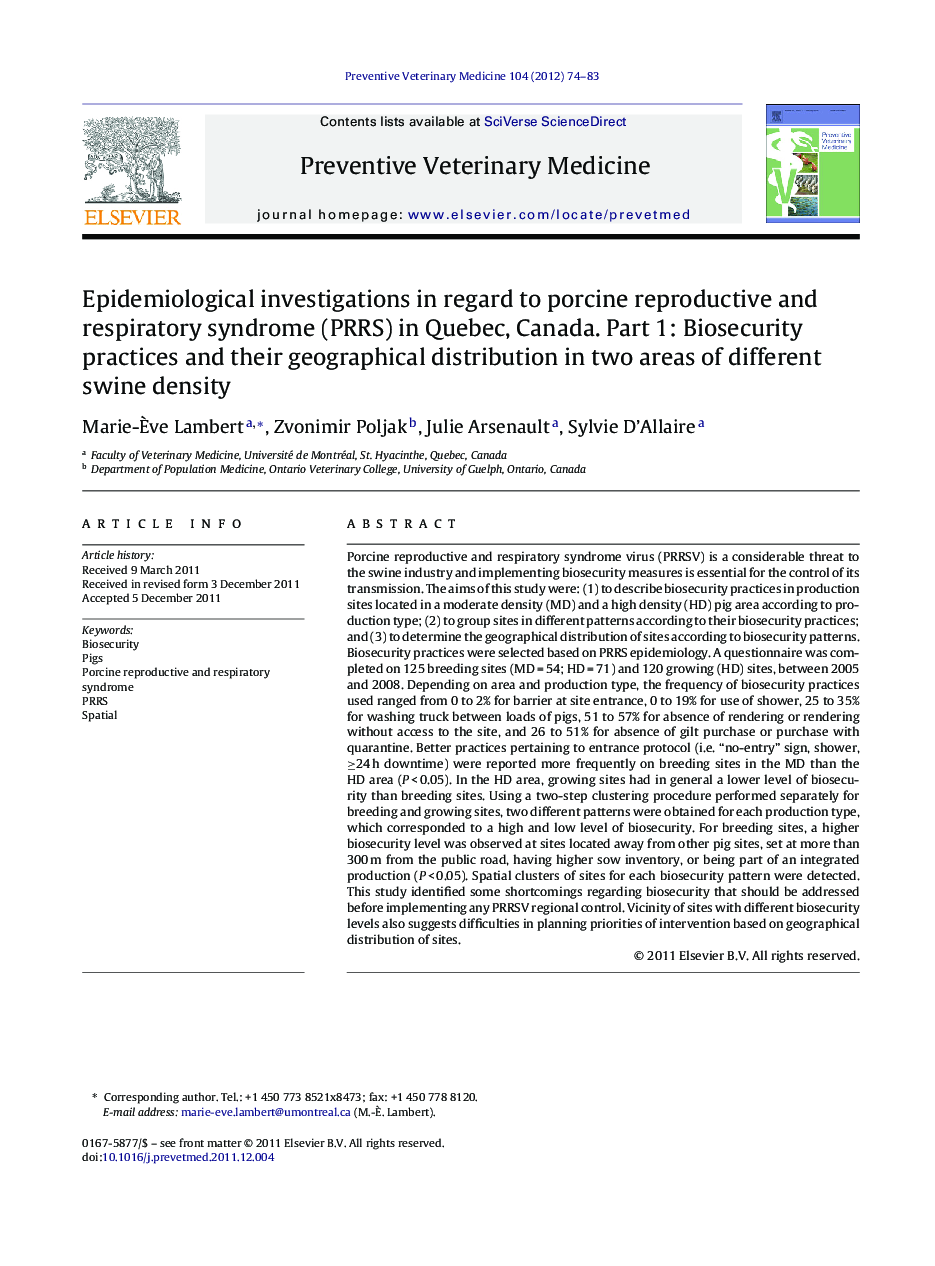| کد مقاله | کد نشریه | سال انتشار | مقاله انگلیسی | نسخه تمام متن |
|---|---|---|---|---|
| 2452703 | 1554191 | 2012 | 10 صفحه PDF | دانلود رایگان |

Porcine reproductive and respiratory syndrome virus (PRRSV) is a considerable threat to the swine industry and implementing biosecurity measures is essential for the control of its transmission. The aims of this study were: (1) to describe biosecurity practices in production sites located in a moderate density (MD) and a high density (HD) pig area according to production type; (2) to group sites in different patterns according to their biosecurity practices; and (3) to determine the geographical distribution of sites according to biosecurity patterns. Biosecurity practices were selected based on PRRS epidemiology. A questionnaire was completed on 125 breeding sites (MD = 54; HD = 71) and 120 growing (HD) sites, between 2005 and 2008. Depending on area and production type, the frequency of biosecurity practices used ranged from 0 to 2% for barrier at site entrance, 0 to 19% for use of shower, 25 to 35% for washing truck between loads of pigs, 51 to 57% for absence of rendering or rendering without access to the site, and 26 to 51% for absence of gilt purchase or purchase with quarantine. Better practices pertaining to entrance protocol (i.e. “no-entry” sign, shower, ≥24 h downtime) were reported more frequently on breeding sites in the MD than the HD area (P < 0.05). In the HD area, growing sites had in general a lower level of biosecurity than breeding sites. Using a two-step clustering procedure performed separately for breeding and growing sites, two different patterns were obtained for each production type, which corresponded to a high and low level of biosecurity. For breeding sites, a higher biosecurity level was observed at sites located away from other pig sites, set at more than 300 m from the public road, having higher sow inventory, or being part of an integrated production (P < 0.05). Spatial clusters of sites for each biosecurity pattern were detected. This study identified some shortcomings regarding biosecurity that should be addressed before implementing any PRRSV regional control. Vicinity of sites with different biosecurity levels also suggests difficulties in planning priorities of intervention based on geographical distribution of sites.
Journal: Preventive Veterinary Medicine - Volume 104, Issues 1–2, 1 April 2012, Pages 74–83